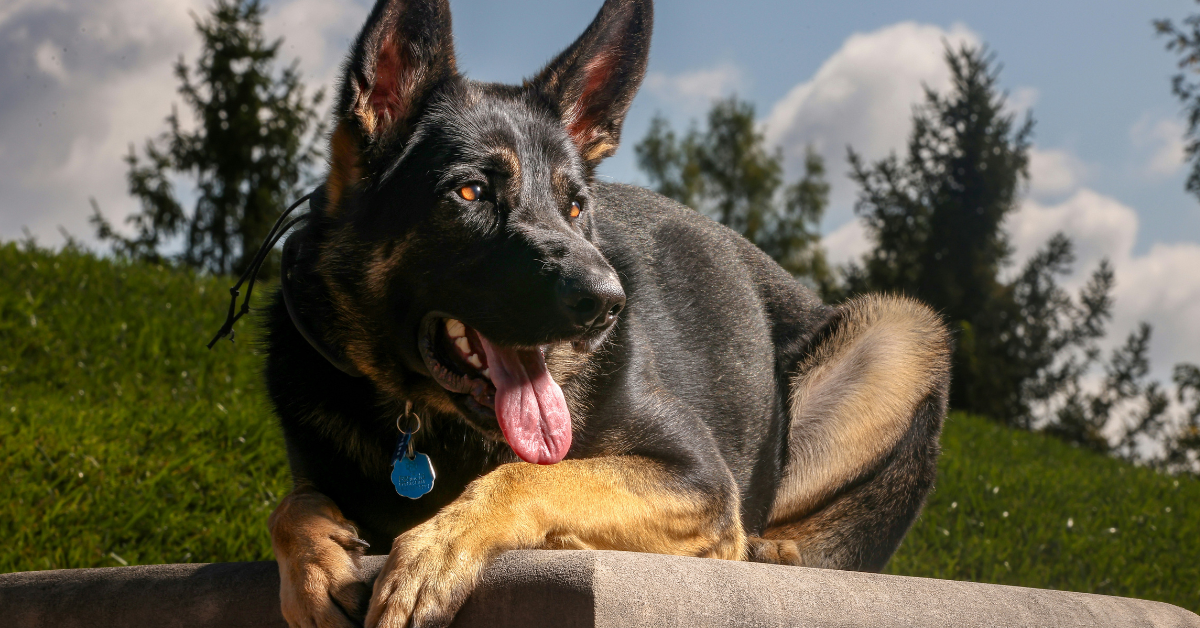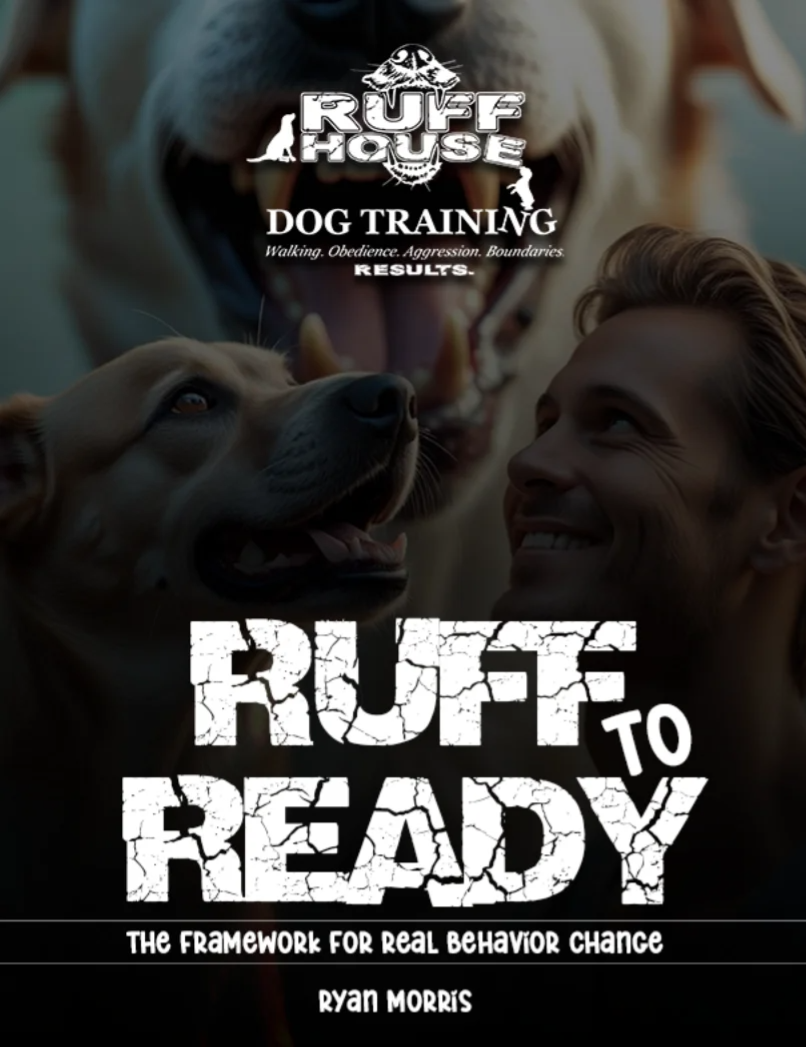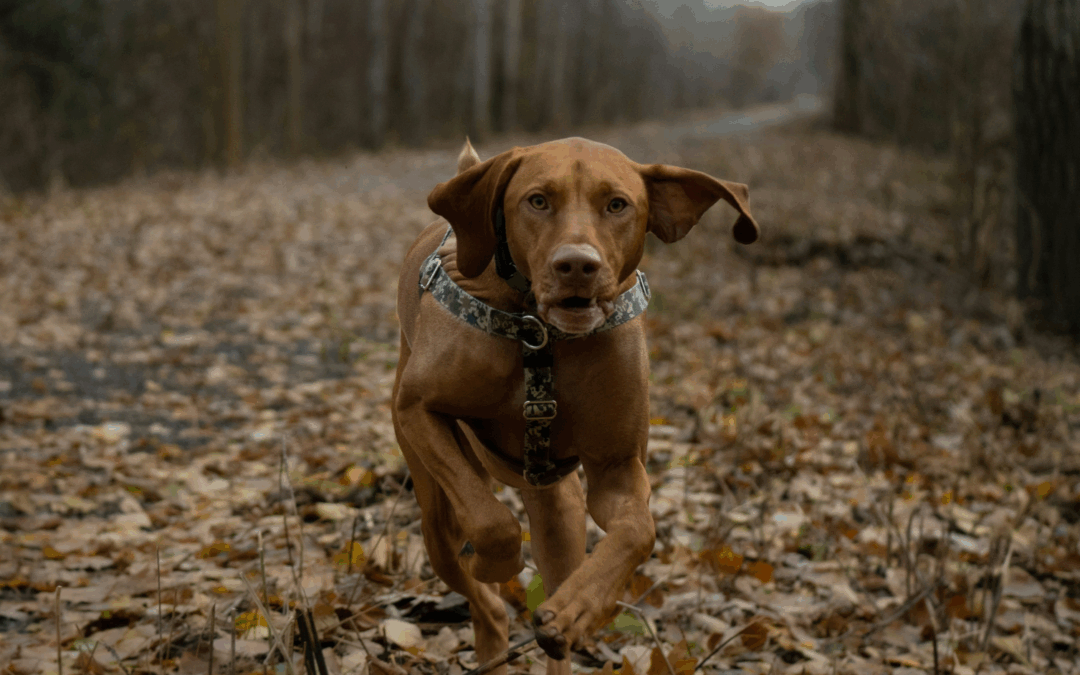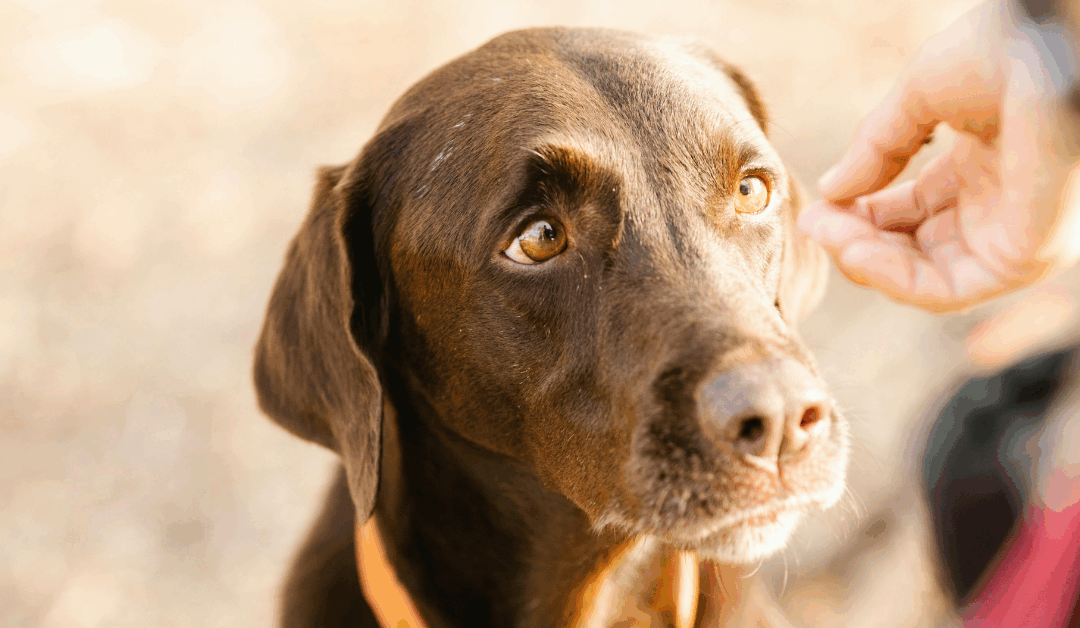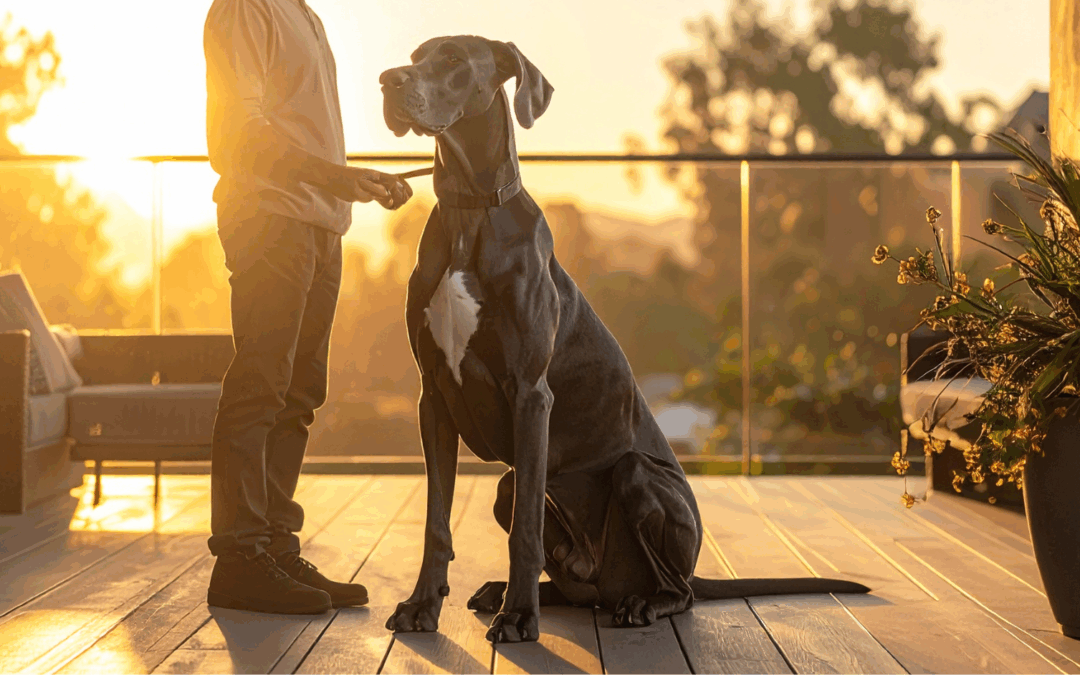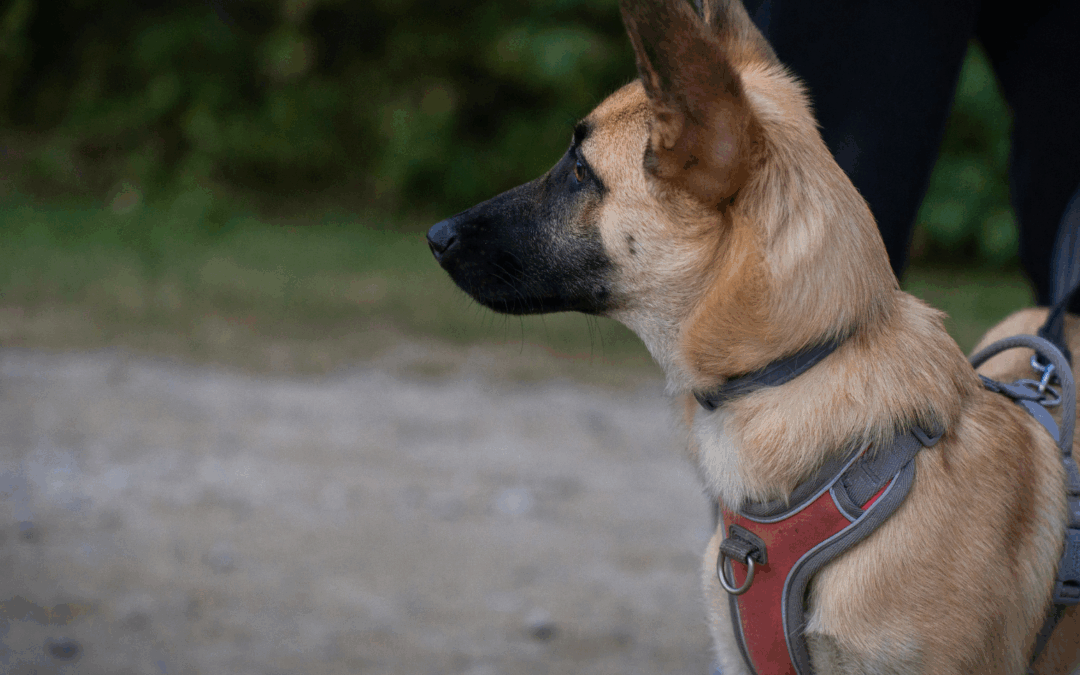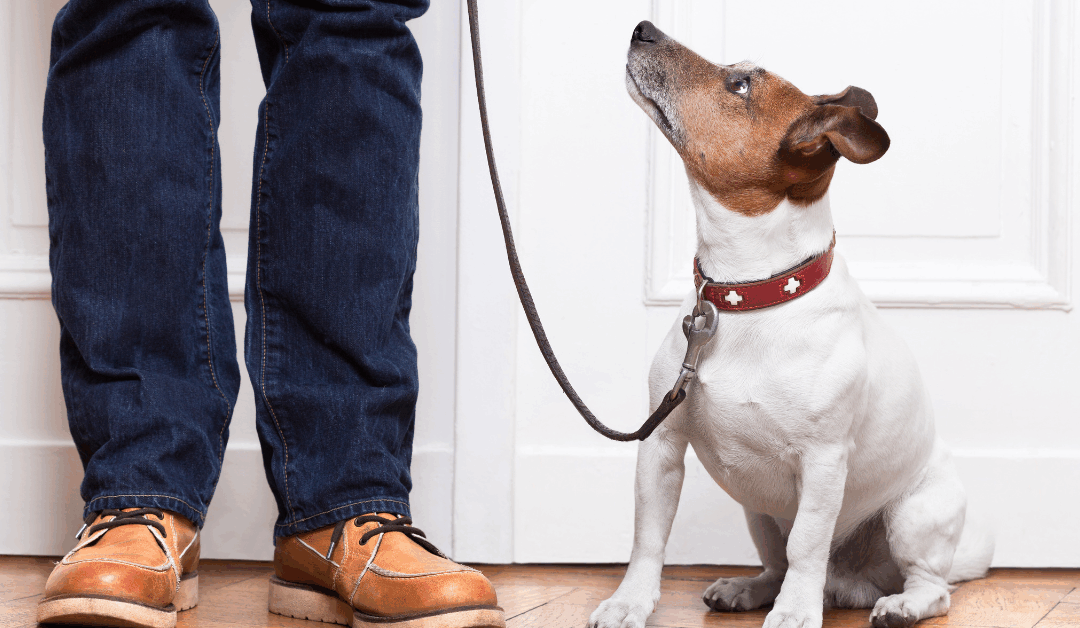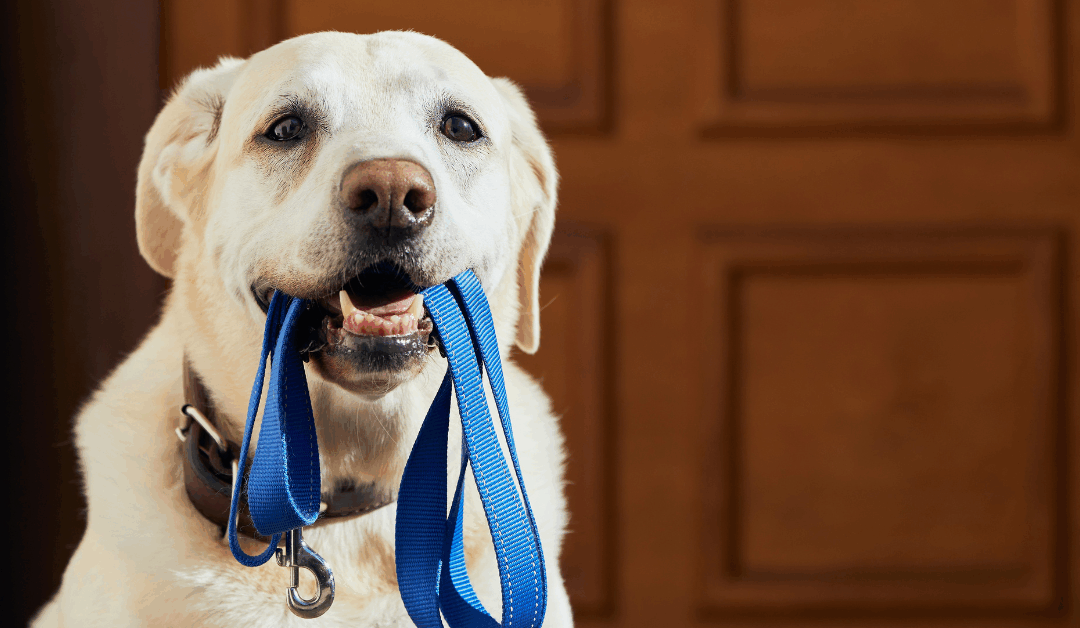If your dog’s been chewing your favorite shoes, barking at every passerby, or giving you that defiant side-eye when you say “sit,” you’re not alone. Every dog owner has been there—frustrated, embarrassed, and wondering if their furry friend will ever learn basic manners.
The good news? Training isn’t about control or dominance. It’s about communication. When you and your dog understand each other, everything changes. The barking becomes bonding, the chaos turns into calm, and your home transforms from a battleground back into the peaceful sanctuary it should be.
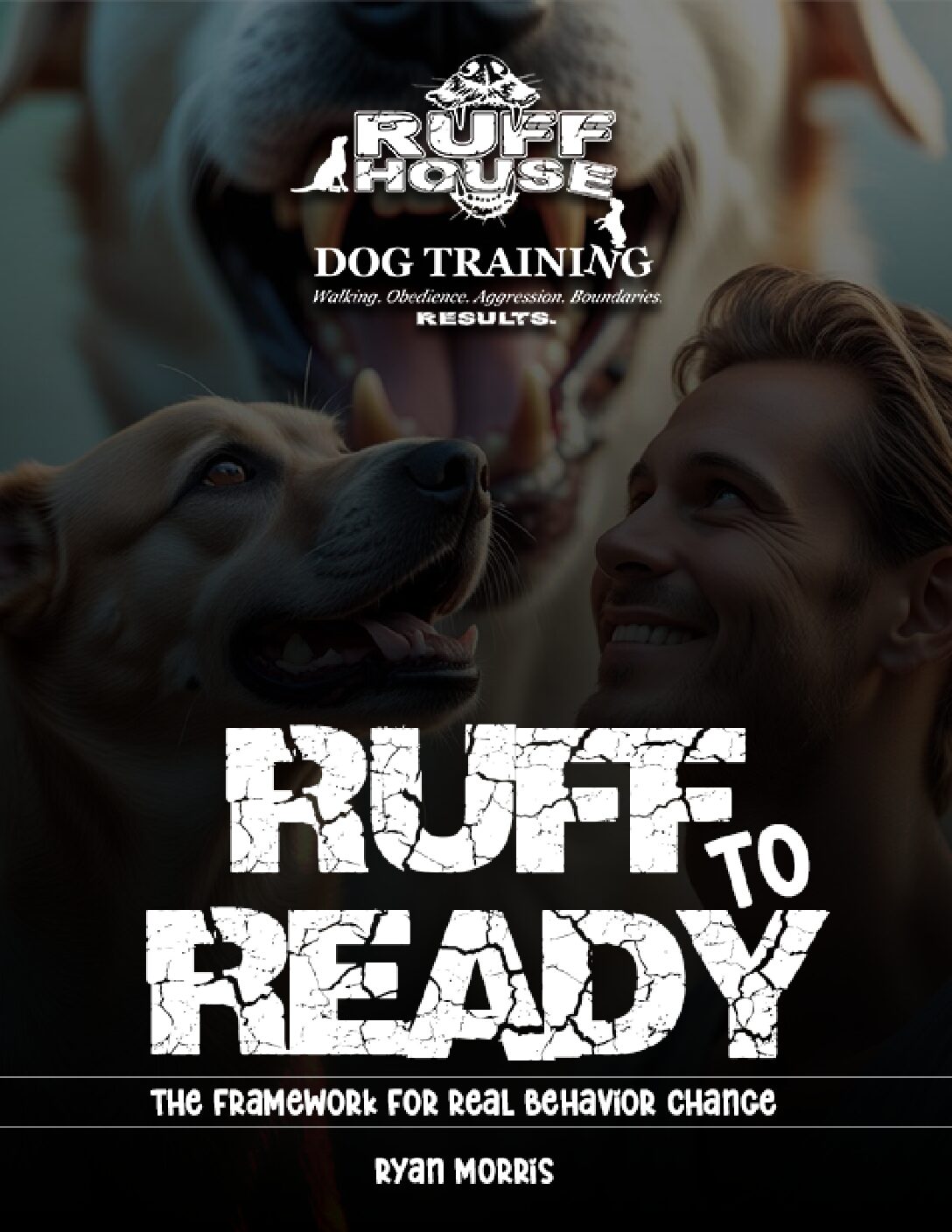
Unlock Real Behavior Change – Download Your Free Guide Now
"*" indicates required fields
At Ruff House Dog Training, we’ve helped over 400 families across Northern Virginia, D.C., and Maryland rebuild harmony in their homes. As a veteran-owned small business, we don’t believe in cookie-cutter solutions or unrealistic guarantees. We believe in practical problem-solving with a sense of humor, because let’s face it—if you can’t laugh at your dog’s antics, you’ll cry instead.
Ready to turn that four-legged tornado into your best friend? These seven proven dog training tips will help you communicate better, train smarter, and enjoy the journey along the way.
Ready to turn the barking into bonding? Book your 90-Minute Miracle today.

Photo by Pedro Sanz on Unsplash
Start With Structure—The Foundation of Successful Dog Training
Dogs thrive on structure. It’s not about being strict or controlling—it’s about creating safety and predictability that helps your dog make better decisions throughout the day.
Think of structure as the invisible framework that supports everything else. When your dog knows what to expect, when to expect it, and what’s expected of them, they naturally become calmer and more responsive. Training starts long before you pull out treats for a formal session. It begins with the routine, consistency, and leadership you provide from the moment your dog wakes up.
Here’s the thing: if you let your dog run the house, don’t be surprised when he starts charging rent. Dogs who lack structure often become anxious, reactive, or destructive because they’re constantly trying to figure out the rules. When you provide clear boundaries and consistent routines, you’re actually giving your dog the gift of mental peace.
Structure helps dogs succeed, especially in high-distraction environments. A dog who knows their place in the family hierarchy is more likely to look to you for guidance when they’re unsure, rather than making impulsive decisions that get them (and you) into trouble.
Mini Takeaway: Structure isn’t strict—it’s stability.
Understand the 3-3-3 Rule—Especially With Rescue Dogs
New dog parents often expect instant obedience, but dogs need time to adjust to their new environment. The 3-3-3 Rule is a game-changer for setting realistic expectations:
- 3 Days to decompress: Your new dog is figuring out this strange new world
- 3 Weeks to learn the routine: They’re starting to understand your schedule and household rules
- 3 Months to feel at home: They’re finally settled and showing their true personality
This rule is especially important for rescue dogs who may have experienced trauma, multiple homes, or inconsistent care. That “perfect” dog at the shelter might seem different once they’re in your living room—and that’s completely normal.
Give your new dog time to settle before expecting perfection. You wouldn’t nail a new job in three days, either, right? During those first few weeks, focus on building trust and establishing routines rather than demanding perfect behavior.
Remember, patience during this adjustment period pays dividends later. Dogs who feel secure and understood are much easier to train than dogs who are still stressed about their new situation.

Photo by Florian Schindler on Unsplash
Watch Their Body Language—Dogs Are Always Talking
Dogs communicate constantly through body language—their ears, eyes, tail position, and overall body tension tell you exactly what’s going on inside their head. Learning to read these signals helps you respond appropriately and prevent problems before they escalate.
A dog with a stiff tail and hard stare isn’t being defiant—they’re uncomfortable or stressed. Flattened ears and a low body posture might indicate fear or anxiety. A dog who suddenly stops moving during training isn’t being stubborn—they might be overwhelmed and need a break.
Recognizing early stress signals allows you to adjust your approach before your dog reaches their threshold. Maybe they need more distance from a trigger, a shorter training session, or simply a moment to process what you’re asking.
The key is responding calmly rather than emotionally. When you stay composed and adjust your expectations based on what your dog is telling you, training becomes a conversation rather than a confrontation.
Mini Takeaway: Read your dog before you react—communication works both ways.
Master the 5 D’s—The Secret to Reliable Obedience
The 5 D’s of dog training are your roadmap to building reliable, real-world obedience. They are:
- Distance: How far away can you be when giving commands?
- Duration: How long can your dog maintain the behavior?
- Distraction: Can they obey with tempting things happening around them?
- Direction: Do they respond when you’re facing away or in another room?
- Difficulty: Can they perform the behavior in challenging situations?
Start simple, then gradually increase each “D.” If your dog can sit perfectly in your quiet kitchen, don’t expect the same performance at a busy park on day one. Build up their skills systematically by adding one element at a time.
For example, teach “stay” for two seconds in your living room before asking for a five-minute stay in the backyard with squirrels running around. This prevents frustration for both ends of the leash and sets your dog up for success.
Short, frequent training sessions beat one long, stressful session every time. Your dog’s brain needs time to process and absorb new information, just like yours does.
Remember the 4 F’s—How Dogs React Under Pressure
Understanding how dogs respond to stress or pressure helps you manage their behavior proactively rather than reactively. The 4 F’s of canine response are:
- Fight: Barking, lunging, or showing aggressive behaviors
- Flight: Trying to escape or hide from the situation
- Freeze: Becoming completely still (often mistaken for obedience)
- Fidget: Pacing, panting, or other displacement behaviors
If your dog suddenly stops moving during training, that’s not obedience—it’s overwhelm. A dog who won’t take treats or seems “shut down” needs a break, not more pressure. Recognizing these patterns allows you to adjust your approach before your dog reaches their breaking point.
This awareness builds empathy and helps you become a better leader. When you understand that your dog’s “bad” behavior is often just stress or confusion, you can address the underlying cause rather than just the symptom.
Mini Takeaway: Understanding your dog’s stress response makes you a better leader, not a tougher one.
Stay Consistent When You Train Your Job—Because Your Dog Won’t Train Himself
Consistency is the secret sauce of successful dog training. Dogs learn through repetition and predictability, which means everyone in your household needs to be on the same page.
If you don’t allow jumping on Monday but your spouse thinks it’s cute on Tuesday, your dog will be confused about the actual rule. Mixed messages create anxiety and slow down the learning process significantly.
Your dog doesn’t need a perfect trainer—just a consistent one. Small, daily training sessions that reinforce good habits are far more effective than sporadic marathon sessions. Even five minutes of consistent practice each day builds stronger neural pathways than an hour-long session once a week.
Celebrate progress, not perfection. Some days will be better than others, and that’s completely normal. Focus on the overall trend rather than individual setbacks, and remember that sustainable behavior change takes time.
At Ruff House Dog Training, we offer unlimited post-session support because we know consistency can be challenging. Life gets busy, questions come up, and sometimes you need encouragement to stick with the program.
Ready to stop repeating yourself? Let’s build real consistency together—book your training session today.
Bonus: What’s the 7-7-7 Rule? (Hint: It’s About Progress)
The 7-7-7 Rule is a helpful mindset for managing expectations: 7 days to build a habit, 7 weeks to make it stick, and 7 months to master it completely.
This timeline reminds us that training isn’t an event—it’s a journey. Real behavior change happens gradually, especially for older dogs or those with ingrained habits. Instead of getting frustrated when your dog isn’t perfect after a week, celebrate the small improvements you see along the way.
Some behaviors will come quickly, while others take months to fully solidify. Reactive dogs might need longer to feel confident around triggers, and rescue dogs often require extra time to trust new routines. That’s not failure—that’s normal progress.
The key is enjoying the process. Every small victory is worth celebrating, whether it’s your dog sitting before dinner or walking past another dog without pulling. These moments add up to create lasting change.
Mini Takeaway: Training isn’t an event—it’s a journey. Enjoy the process.

From Chaos to Calm—Let’s Make Training Fun With These Dog Training Tips
Training your dog doesn’t have to be a constant battle. When you focus on structure, patience, appropriate reinforcement, clear communication, and consistency, you create an environment where both you and your dog can succeed.
Remember the key principles: start with structure to create stability, give your dog time to adjust with the 3-3-3 Rule, make training enjoyable through the appropriate negative and positive reinforcement and, pay attention to what your dog is telling you through body language, build skills systematically with the 5 D’s, recognize stress signals through the 4 F’s, and stay consistent in your approach.
At Ruff House Dog Training, we’ve seen it all—the chewers, the jumpers, the drama queens, and the escape artists. Whether your dog is a puppy learning the ropes or a senior citizen with stubborn habits, every behavior challenge has a solution. As a veteran-owned small business, we bring discipline, empathy, and humor to every training session because we believe learning should be enjoyable for everyone involved.
The best part? You don’t have to figure this out alone. Our 90-Minute Miracle sessions and 6-Week Obedience programs are designed to give you immediate tools and long-term strategies that work in the real world. Plus, our unlimited post-session support means you’ll never wonder if you’re doing it right.
Ready to transform stress into success with your dog? Let’s turn that chaos into the calm, harmonious home you’ve been dreaming of.
Book Your 90-Minute Miracle Today—End the Barking, Chewing, and Chaos.
